[IFA 2022] TCL CSOT (Mini LED TV, QLED TV, Smart home appliances)
#ifa2022 #tcl #tcltv

https://ubiresearch.com/en/

https://en.olednet.com/

marketing@ubiresearch.com
+82-2-577-4391
#ifa2022 #tcl #tcltv

https://ubiresearch.com/en/

https://en.olednet.com/

marketing@ubiresearch.com
+82-2-577-4391
Resolution : 1920(H) * RGB * 1080 (V)
Frame Rate : 60Hz
Active Area(mm) : 309.12(H) X 173.88(V)
Color Gamut : DCI-P3 → 99%
Color Temperature : 6500K
Brightness : 200nits
Contrast Ratio : 1,000,000 : 1
Crimp Radius : R20mm
Crimp Life : 100,000 times
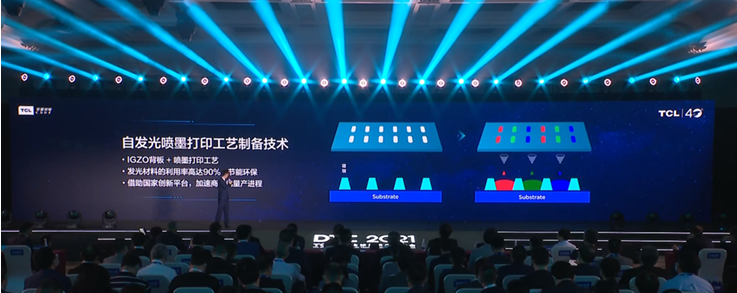
According to the ‘China Trend Report’ published by UBI Research, TCL CSOT plans to apply the generation 8.5 inkjet printing OLED technology to the T8 line. It is expected that some layers will be formed by vapor deposition in the inkjet printing method rather than the complete inkjet printing method. The location is likely to be Guangzhou.
TCL CSOT’s T8 line was scheduled to start construction in March 2022 using the inkjet method, but there were rumors that the schedule continued to be delayed due to investment scale and yield issues. There are also talks about the project being canceled altogether. However, it seems that TCL CSOT has continuously improved its technology by continuously collaborating with JOLED. They also announced related contents at DTC 2021 held in November 2021.
It is is expected that mainly OLEDs for IT and automobiles will be mass-produced at the T8 line. The investment schedule and details of the TCL CSOT T8 project can be found in the ‘March China Trend Report’.
Reporter : Daejeong Yoon
Smartphone makers are promoting the new form factor, foldable phones at MWC 2019 started on February 27 and it runs until 29 in Barcelona Spain.
The show is buzzing with products from big-name tech companies, including Samsung Electronics and Huawei,TCL, LG Electronics being unveiled. That includes a variety of phones with foldable screens.
Samsung unveiled foldable phone ‘Galaxy Fold’ to customer, highly touted at the Samsung Galaxy unpacked event.
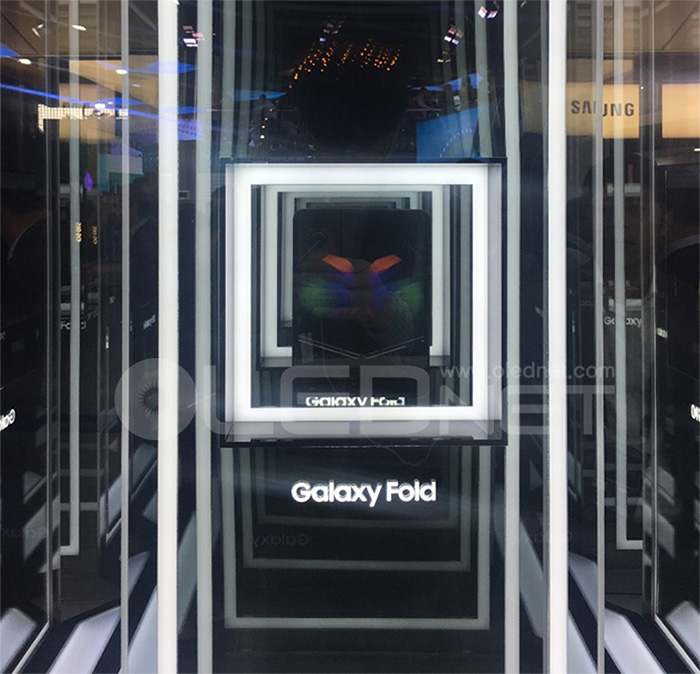
In folding ‘Galaxy Fold’ features a 7.3-inch QXGA + resolution OLED screen and it was built to be compact size with 4.6-inch HD + resolution OLED when folded.
And Huawei announced its own foldable phone “Mate X” uses roll out foldable technology, it is surrounded by a 6.6-inch main OLED on the front and a 6.38-inch on the back. It is 8.7 inches when it is opened, 1.4 inches bigger than Samsung Electronics’ Galaxy Fold.
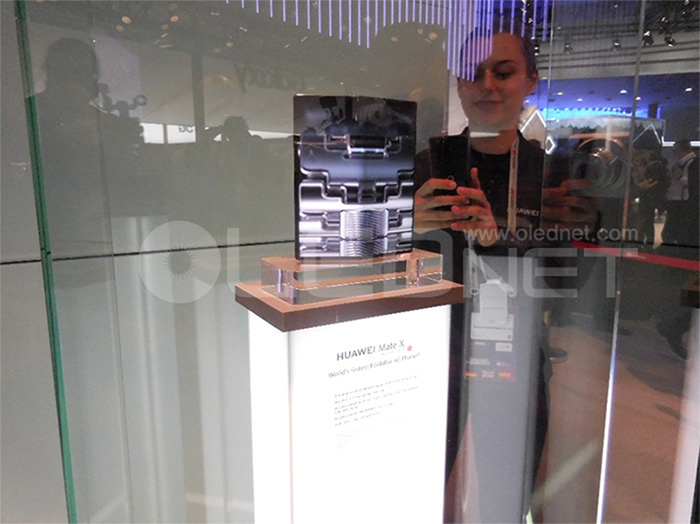
Mate X’s front display has 2480 × 1148 resolution with a 19.5: 9 aspect ratio. The back OLED has a 2480 × 892 resolution with a 25: 9 aspect ratio. When you flip it open, the resolution is 2480 × 2200 with an aspect ratio of 8: 7.1. .
Also, TCL announced the prototype device uses the company’s proprietary “DragonHinge” mechanism to fold and unfold the screen, it has 7.2-inch screen.
According to TCL, this device will build a production version that is slated for release by 2021.

Lastly, LG showed off V50 which is similar to a folding phone, it does have an optional case with a whole second screen on it. With two near-identical phone displays next to each other, the functional split-screen allows multitasking and gaming easily.
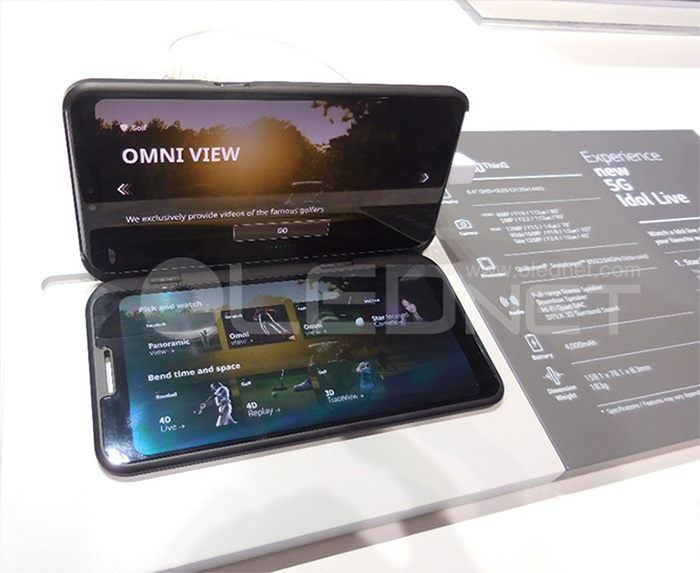
Reporter : Daejeong Yoon
The CES, held in early January of each year, is the most important event to understand all of the consumer electronics trends of the year. This year, TV makers from all over the world exhibited a variety of products to attract spectators to the event.
When OLED TV occupied more than 50% of the premium TV market with more than $ 2,000, the LCD TV industry sought to prevent the OLED TV market from expanding by exhibiting 8K LCD TVs to CES. However, the attention and admiration of the spectators were poured into OLED TV R.
The 8K TV market began to open slightly from last year, in preparation for the 8K broadcast starting from the Tokyo Olympics in 2020. LCD TV companies displayed 8K LCD TVs of various sizes to preoccupy the market with the keyword of 8K. LCD TV, however, has not been recognized by viewers as a new TV product since Sharp has already exhibited steadily.
Another reason is OLED TV R displayed by LG Electronics. In the main body with built-in speaker, OLED TV rises up and goes down again. A lot of people came to see OLED TV R to shoot.
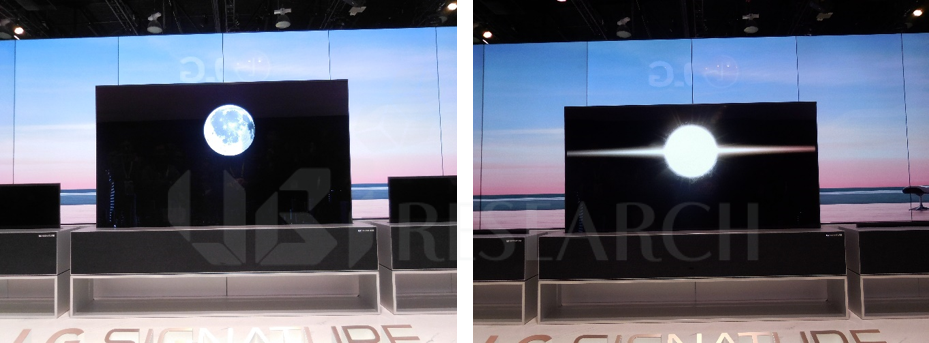
<LG Electronics, OLED TV R>
Last year, micro LED TVs became more prominent. In addition to Samsung Electronics, Sony, TCL and Hisense exhibited micro LED TVs this year. It seems that the gap of micro LED TV technology between Korean companies and Chinese companies is only about one year. In the micro LED TV market based on assembly technology that does not require special manufacturing technology, China, which is the world’s best LED industry and infrastructure, is expected to dominate the market soon.
However, as LG Display has a unique OLED TV manufacturing technology, which has a very complicated panel structure and manufacturing process, the technological gap between Korea and China is expected to be more than five years difference. In this situation, OLED TV R, released by LG Electronics, once again realizes that Korea’s OLED technology is the best in the world.
On the other hand, TV companies’ display of OLED TVs, except for LG Electronics, has stagnated. These companies are not yet receiving 8K OLED panels and rollable OLED panels from LG Display. Even Sony does not have any special features, only OLED TVs that are well known so far.
As a result, the CES TV show was notable only for LG Electronics.
It is judged that LCD TV using mini LED that TCL has released can compete with OLED TV in this exhibition. The contrast ratio is displayed as 1,000,000: 1 similar to OLED TV. Black is a very good product that has a vibrant color and contrast ratio similar to OLED TV. However, a holo-effect was found around the bright screen displayed on the black desktop. It is a phenomenon that the surroundings appear to spread brightly. As it is invisible to non-specialists, it is competitive in price and is a product that can compete well with OLED TVs.
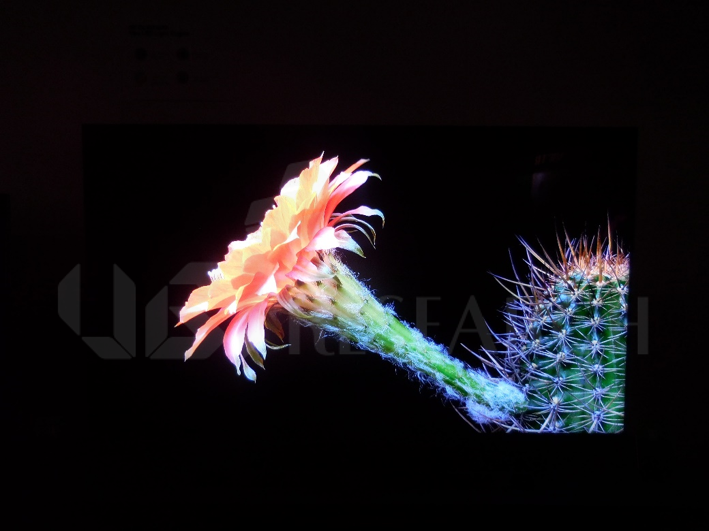
< TCL, 8K QLED TV with mini LED>
China TCL will invest RMB 42.8 billion (US$ 6.71 billion) in Shenzhen to establish a factory for large-area OLED panel production. According to South China Morning Post, TCL recently announced that it will produce 90,000 units on the basis of 70-inch panel in the new production line of Gen 11 (3370 mm x 2940 mm) with the goal of mass production in March 2021 in the data submitted to the Shenzhen Stock Exchange. The main products are to be known as 65-inch and 75-inch OLED panels, and 65-inch, 70-inch and 75-inch display panels with 8K resolution.
TCL will form a partnership with the China Development Fund for the necessary financing and will set up a new production line at TCL’s semiconductor subsidiary with RMB 20.3 billion.
Large-area OLED to be produced by TCL is expected to adopt solution process RGB. At the ‘4th OLED Korea conference’ hosted by UBI Research in March, James Lee, deputy chief engineer of TCL mentioned about the development of next-generation premium TV with the screen size of 70-inch or more and 8K resolution, based on the solution process.
Lee said, “The price difference between OLED TV and premium LCD TV is estimated to be reduced to 1.4 times when the price of large-area OLED panel is lowered by the operation of LG Display’s Gen 10.5 plant in 2020. We are developing solution process technology for large area OLED and it will be applicable to Gen11 factory. ”
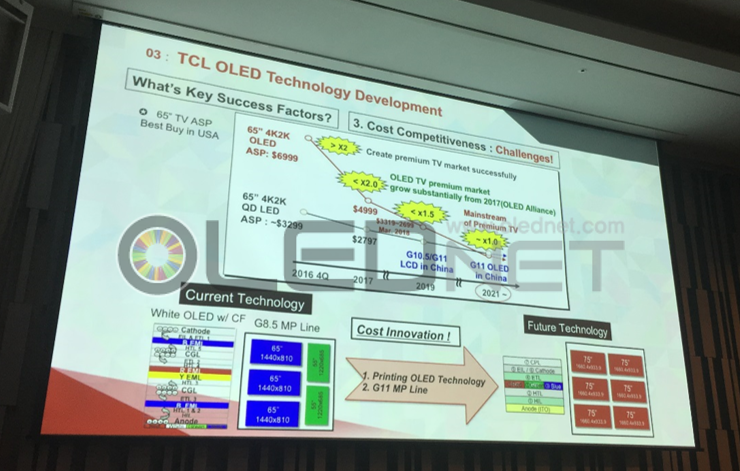
Gen 11 production line is capable of producing six sheets of 75-inch OLED panels, being able to achieve a yield three times higher than Gen 8.5 production line and a cutting efficiency of over 95%. In addition, it is possible to produce large-area OLED panels with a real RGB structure instead of the WRGB structure when solution process is applied. Based on this, TCL emphasized that the construction of the Gen 11 solution process OLED mass production line is essential. Meanwhile, TCL has jointly established JUHUA Printing Display Technology with Tianma, a Chinese company, in 2016 through CSOT, which is a subsidiary of TCL, and is continuously developing the inkjet printing process by a Gen 4.5 R&D pilot plant.
On 8 January 2018, the largest electronic show is held at Enclave Convention Center in Las Vegas, United States.
Major electronic companies such as LG Electronics, Sony, Vestel, Changhong, Skyworth presented OLED TV as main exhibition. In particular, Samsung Electronics’ “Micro LED” exhibition received a great deal of attention. Samsung Electronics unveiled the world’s first “micro LED” technology-applied 146-inch modular TV, “The Wall.” People came to see the product and it was heated up in a hot issue. Samsung Electronics emphasized that this product is a future screen that is unlimited in image quality, size and form. Through the implementation of the local dimming 3000, “The Wall”, which was unveiled at the exhibition show is developed by brightness, contrast ratio, color reproduction and black display compared to the existing display.
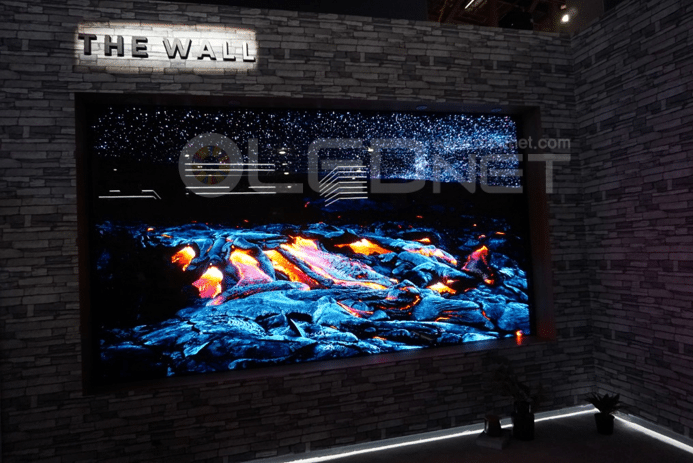
<‘Micro LED TV ‘The Wall’ of Samsung Electronics’>
Especially, the existing “Mini LED” products were exhibited along with “The Wall” for comparison of exhibition. And the excellence of “Micro LED” was outstanding. “Mini LED” products was little far from the large display as pixels and the lines of each module were shown on the screen.
LG Electronics, Sony, Changhong and other companies presented 65-inch and 77-inch OLED TV display products including Sound Acoustic OLED TV products. In particular, Konka reflected the trend that TV is a part of furniture, not just electronic products and it consists of a set design that took advantages of Chinese traditional atmosphere.
In addition, many set manufacturers have demonstrated the advantages of OLED TV, which is the lightest and thinnest through “Wall Paper TV” and “Slim” concepts.
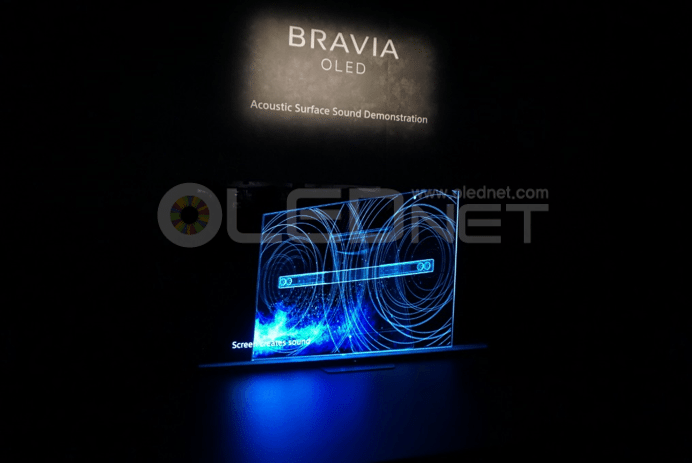
<A8F Bravia OLED TV of Sony>
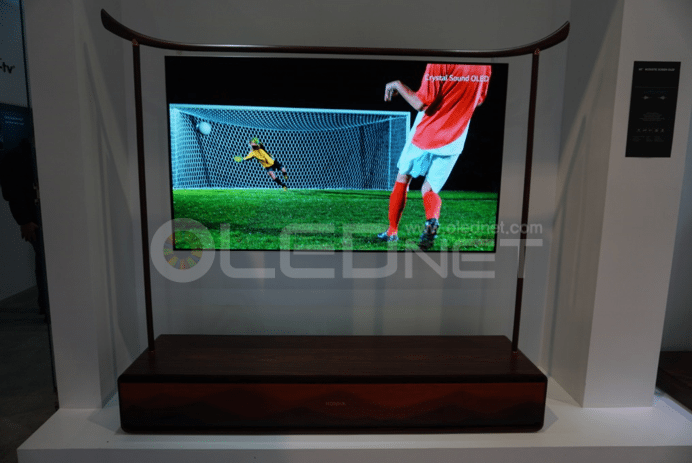
<OLED TV of Kongka>
‘TCL’, which occupies a side of QLED TV showed more advanced QLED TV in image quality and color reproduction range. According to the person in charge of TCL, QD dominated the portion of the current market therefore, many manufacturers are producing Quantum dot LCD, and also considering OLED TV launches. The person in charge emphasized that they are building factories in China that produce only OLED.
LG Electronics is a leading OLED TV company and showed OLED which is being developed continuously through making tunnels of OLED TV. They revealed that LG Electronics is the world’s first OLED TV set manufacturer. People look forward to seeing OLED growth in the future through CES the first electronic exhibition show in 2018.
TCL’s Xiaolin Yan CTO addressed solution process OLED TV and self-emitting QLED TV as premium TV after white OLED TV at iMiD 2017 keynote address in BEXCO, Busan on 29th.
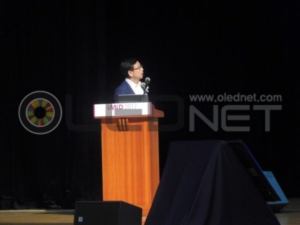
Yan CTO noted that white OLED TV, which is currently leading the premium TV market, meets all the requirements of premium TV due to its superior image quality, design differentiation, high resolution realization and nature-friendly characteristics compared to QD LCD TV.
In addition, the price that is higher than the current QD LCD TV is expected to be overcome by applying the solution process, and mass production is also expected in 2019.
Yan CTO predicted that the “solution process would be easy to produce 75-inch panels at Gen 10.5 because the process can be performed without splitting the ledger,” and “it is also possible to produce full-emission RGB OLED TVs.” However, he emphasized that the compatibility of materials and equipment and the development of ink forming process technology should be done.
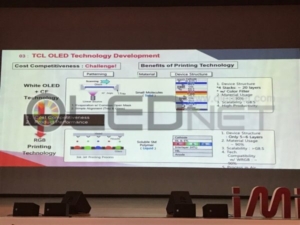
Following to that, “QLED structure is very similar to OLED structure, so it is easy to apply the technology because of the low entry barriers,” he said. “The lifetime and efficiency of the blue light emitting layer compared to the current OLED is very low, and performance must be ensured without the use of cadmium.”
Lastly, He mentioned the establishment of printing technology in Guangdong JUHUA to promote the commercialization of solution process OLED TV and self-luminous QLED TV, and emphasized the cooperation of material, equipment and panel makers to develop next-generation premium TV.
■ “Finding a new OLED market” – Discussing OLED replacement in view of OLED application development
■ Discussing new technologies of future display (LCD, QD-LCD, OLED)

The potential of future OLED development is inexhaustible as OLED can be applicable to all industries including VR / AR, automotive, aerospace, and lighting not content with smart phone and TVs. There has been growing public interest in OLED in many different industries. To meet the market demand, Ubi Research, a market research company co-hosts ‘iMiD2017 Industrial Forum’ with Korea Display Society (KIDS) in BEXCO, Busan on 30th of August.
The forum will proceed with a panel discussion among key specialists and presentation, which will enable people from many different industries to exchange information not only on the display market but also current OLED market status, technology and explore a new market potential generated in the future.
In the first session ‘look for a new OLED market’, OLED replacement will be presented in view of OLED application development. The key players include Dr. Teruo Tohma, WooSeok Jeong, principal research fellow at the Electronics and Telecommunications Research Institute (ETRI), Julian K chang, Managing director of Boeing Corporation, Professor TAKUYA KOMODA at Yamagata University, senior researcher, Michi Hisaishi, ALPINE Michihisa Onishi.
The second session, ‘Discussion of New Technologies in Future Display’ will provide insight into the latest products and technology trend of TV manufacturers competing with one another to dominate the next generation display market. Nam-Suk Oh, CEO of Samsung Electronics will present an updated LCD TV using Quantum dots technology under the title of “Quantum Dot and Advance of LCD-TV”.
In the OLED TV camp, under the title of “OLED, Now and Future”, Joon-Young Yang at LG Display will review the current status of OLED TV led by the current market trends, and also address OLED future implemented in a wide range of ‘flexible and rollable’ designs.
Weir Cao, senior researcher at TCL, will present both the technology status of the Colloidal Quantum Dots and TCL products applied to LCD in the market, under the topic of “TCL Display Technology with QDs”. The premium TV strategies are expectedly revealed. Lee Choong-hoon, CEO of Ubi research co-host of this forum, offered a time to summarize the premium TV market on the topic of ‘OLED TV market outlook by premium TV market expansion’ by analyzing the presentations of the companies that presented earlier.
For more information on the 17th iMiD2017 Industrial Forum, please visit iMiD2017 official website (http://imid.or.kr/2017/indi_forum.asp).
In MWC 2017, the competition over smart watches proceeded fiercely.
The unveiling of Gear S3 by Samsung Electronics in the last IFA 2016 attracted great attention from the smart watch market. The disclosures of products that can compete with Samsung Electronics’ Gear S3 at MWC 2017 are gaining great popularity among viewers.
LG Electronics displayed G-Watch 2 Sports with 1.38-inch P-OLED and G-Watch Style with 1.2-inch P-OLED, HUAWEI exhibited HUAWEI Watch 2 and HUAWEI Watch 2 Classic with 1.2-inch AMOLED panel, and TCL showed MOVETIME with 1.39-inch AMOLED panel.
The smart watches shown by LG Electronics, HUAWEI, and TCL adopted flexible AMOLED (P-OLED) and circle types to save the designs of existing watches, and LG Electronics’ G-Watch 2 and HUAWEI’s HUAWEI Watch 2 can be used as devices independent of smartphones because they have separate sims.
LG Electronics’ G-Watch 2 Sports is equipped with 1.38-inch circle type AMOLED panel, Google Android Wear 2.0, 768MB RAM, 4GB internal memory, and 430mAh battery, and it supports IP68-level waterproof and dustproof functions and wireless charging function.
On the other hand, G-Watch 2 Style is equipped with 1.3-inch circle type AMOLED panel, Google Android Wear 2.0, 4GB internal memory, and 240mAh battery, and it supports IP67-level waterproof and dustproof functions.
HUAWEI Watch 2 is equipped with a 1.2-inch circle type AMOLED panel, Qualcomm® Snapdragon ™ Wear 2100, 1.1GHz quad-core CPU, Google Android Wear 2.0, 4GB internal memory, 768MB RAM, and 420mAh battery, and it supports various types of Watch face, an equippable Sim (4G), and IP68-level waterproof and dustproof functions.
Meanwhile, LG Electronics and HUAWEI devoted considerable spaces to the smartwatch exhibition at their booths in the MWC 2017 exhibition, and it suggests that there will be big changes in the smart watch market which is dominated by Samsung and Apple.
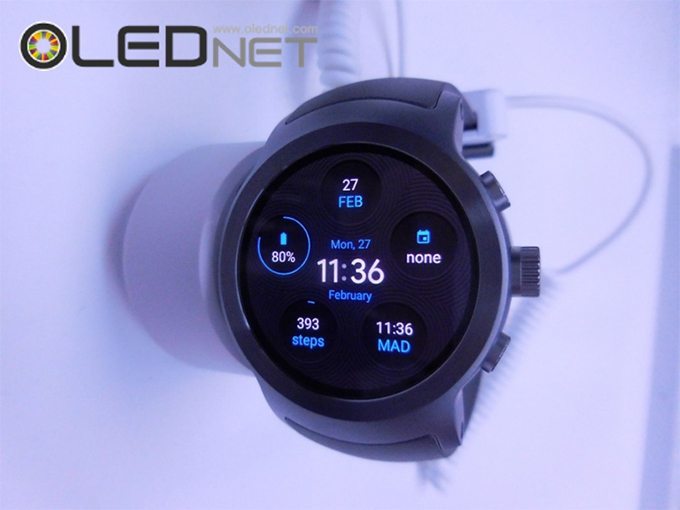
<G-Watch 2 Sports of LG Electronics>
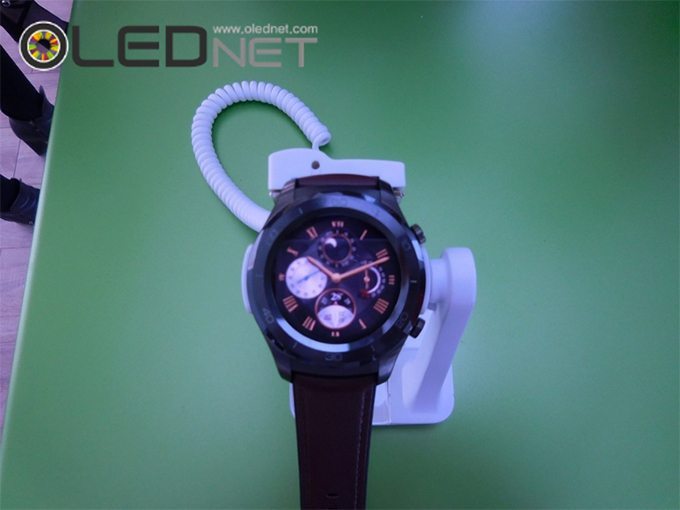
<HUAWEI Watch 2 of HUAWEI.>
UBI RESEARCH / CEO:Choong Hoon Yi / Business License Registration Number 220-87-44660
ADDRESS: A-1901, Samho Moolsan Bldg, 83, Nonhyeon-ro, Seocho-gu, Seoul, Republic of Korea (Zip) 06775 TEL:+82-2-577-4390 / E-MAIL:marketing@ubiresearch.com
